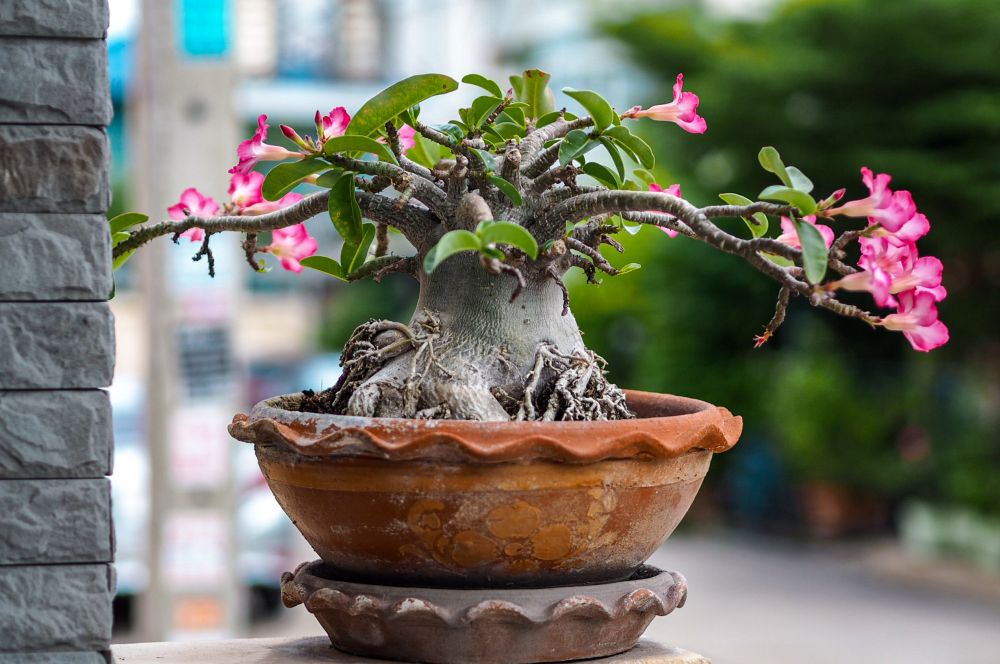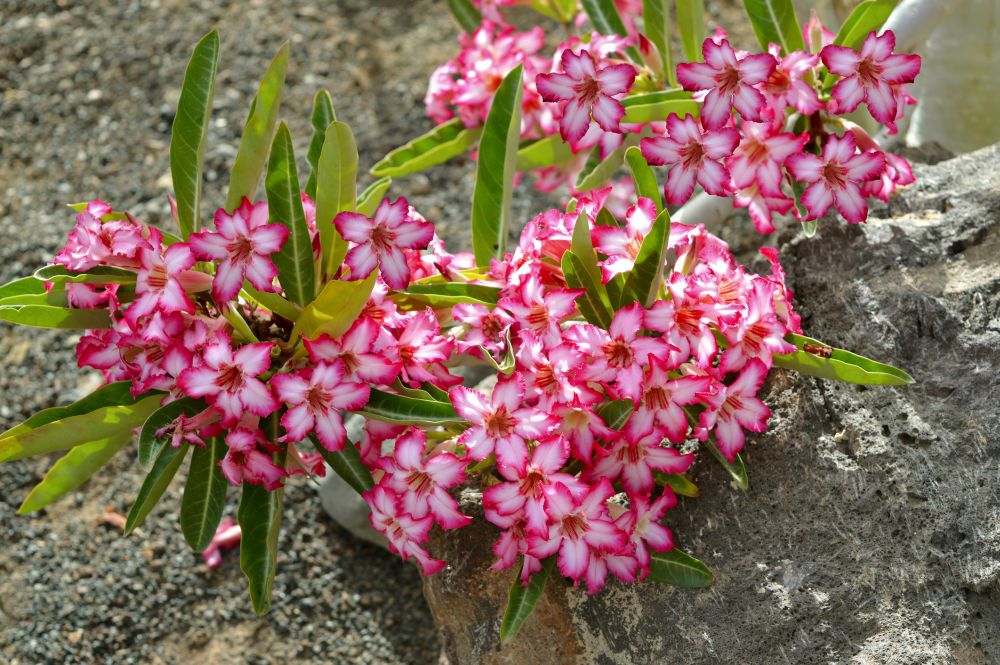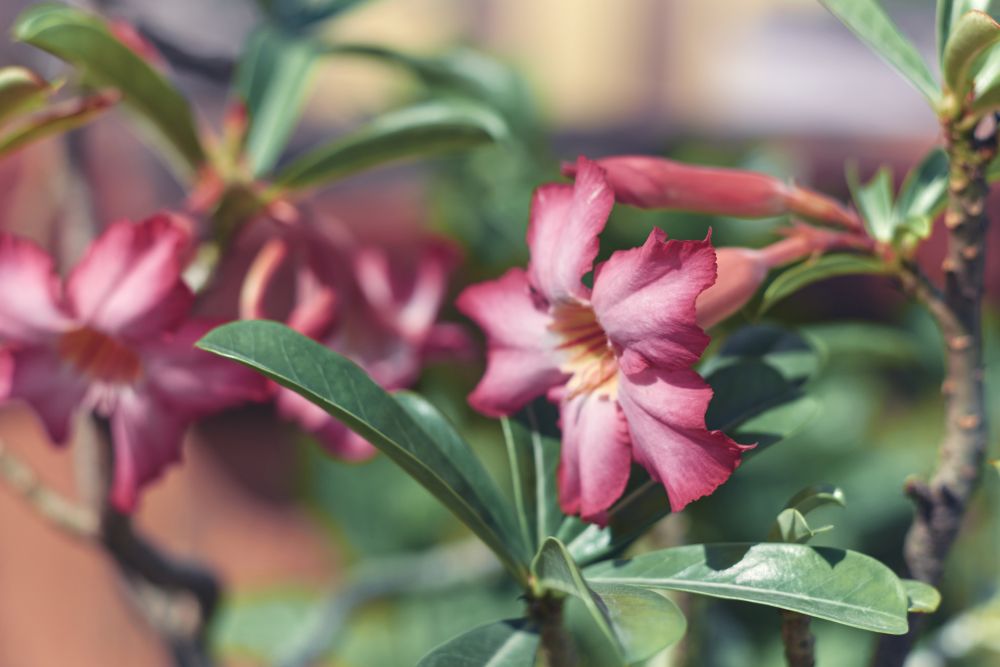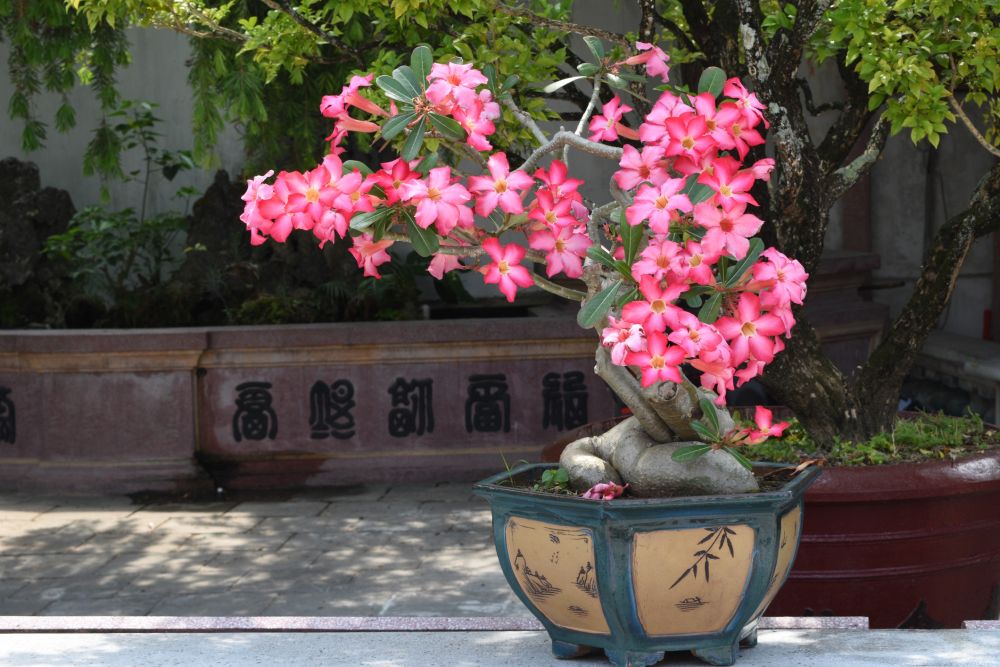How to Grow the Desert Rose (Adenium Obesum)
Slow-growing succulents are the bomb. If you’re looking for a houseplant that can survive in rugged dwellings, then you better try the desert rose out. Same as the porcelain flower, the variety is a member of the Apocynaceae sub-family of succulents. It’s native to three places—Madagascar, Middle East, and northeastern Africa.
The plant’s dramatic and showy appearance gave us the constant urge to dig a little deeper about its eccentric preferences regarding the growing conditions. Read on to learn more about the evergreen desert rose.
The Desert Rose at a Glance
After some intense background check, we learned that the desert rose is a poisonous succulent that most growers find pretty inviting when growing indoors. Although its pink blooms characterize the plant, many hybrids originally emanate from Adenium; hence, you’ll find other desert roses with different shades.
All five varieties are native to arid and semi-arid regions but can thrive pretty well under tropical climates. Apart from its lush and vibrant blooms, the branches on this succulent have a rustic look that makes the plant stand out when sitting in a collection of other houseplants. When growing in a tropical climate—preferably USDA hardiness zones 11 and 12—the desert rose will survive outdoors as an ornamental piece.
Desert Rose Caring Tips
Flowering & Fragrance
Apart from its thick stems, the desert rose blooms some pink flowers when growing under favorable conditions. Sometimes, you’ll need to be a little patient since it’s a slow grower and might take a bit longer than usual to produce flowers. The blooms will last for a couple of weeks throughout spring and summer, then lose their vigor.
Light & Temperature
The desert rose, as the name suggests, loves to bask under the full sun. And it’s typical for succulents to survive in a location with bright light. However, it’s also essential to note that growing this flowering plant somewhere with inadequate light could lead to etiolation. If you place the container in a shady place, the stems and leaves might start to experience leggy growth. During the blooming phase, your Adenium obesum will need at least 6 hours of light each day so the flowers can have an unmatched touch of vibrancy.
Although it requires the full sun to produce buds, you want to give it a break in between during the growing season. Intense heat from the sun could cause damage to the overall appearance of the foliage. The ideal temperature for this flowering succulent should fall anywhere between 70 to 80 degrees Fahrenheit. Try to make the temperature not fall below 60 degrees Fahrenheit. And if your desert rose is growing outside, move it indoors during winter since it’s not a frost-hardy type. In a warm environment like a greenhouse, your Adenium obesum will bloom even during the winter season.
Humidity
The desert rose succulent typically doesn’t like to grow in an environment with too much humidity. It naturally keeps up with dry conditions reasonably well. However, any excess moisture will make the soil overly moist, and the roots will be prone to rotting, which’s often a result of fungal infections. To balance the humidity level, you want to give your desert rose the correct dose of sunlight. Placing this succulent near a window sill or under grow lights would significantly help lower the humidity. The ideal humidity range needs to fall anywhere between 50 to 60 percent when the temperatures are warmer. In a nutshell, you want to treat your desert rose as a tropical plant during summer or spring and as a cactus when it’s winter or fall.
Soil & Requirements
Use potting soil with a light texture that allows easy drainage. It also needs to retain some moisture moderately. It’s best to amend the potting soil with perlite and sand to improve drainage. Desert roses aren’t intricate to please when grown outdoors in the ground, so long as the drainage conditions are optimal. The soil pH needs to hang around neutral to acidic, so 6.0 is fine. Since this succulent is a slow grower, there won’t be any need for transplanting every other season. But to encourage the development of roots, your desert rose might need to be transplanted once every 2 or 3 years. To give this houseplant enough nutrients to sustain it throughout the growing season, you want to replace the old soil with one that’s rich and has a porous texture when repotting.
Potting
While the desert rose has the traits of a slow grower, it’s prone to stunted growth when the roots are pot-bound. You, therefore, want to grow it in a medium-size container. It’s also best to grow your desert rose inside a container when it’s outdoors, so moving it inside can be a lot easier during winter. Clay pots are porous; hence they can let air and moisture pass through compared to plastic containers.
Watering
Once the desert hits maturity, it does pretty well, even with minimal watering. Also, the watering needs will vary, depending on the season and temperature. When the temperatures are extremely low during winter, you’ll need to cut back the watering intervals by a notable margin. When your desert rose is in its growing season—from late spring till summer—you’ll need to keep the soil moist but not soggy. Wait till the soil dries up completely and keep an eye on the patterns, so you can know when to water the succulent next. It’s also best to grow it inside a pot with enough drainage holes to let out any excess moisture. If the roots sit in soggy soil for too long, they might attract some harmful pathogens that cause rotting.
Fertilizer
The desert rose will still have an imposing stature that evokes lots of admiration even without feeding. But since you probably have an unwavering enthusiasm for blooms, using fertilizer might be necessary. And the best option for such a succulent would be a balanced and soluble fertilizer that’s ideally in the ratio of 20-20-20. You can also opt for a slow-release granular fertilizer and still achieve plausible results. Before feeding your Adenium obesum, you’ll need to dilute the fertilizer at half its strength. Use the solution once a month during spring and summer when the growth hormones are active. Your desert rose succulent will bloom anytime between these two seasons. When the hormones are experiencing dormancy, avoid fertilizing your desert rose.
Grooming & Maintenance
A drastic change in the environment might alter the overall appearance of the foliage. Leaves, for instance, tend to drop due to heat stress. They might also become leggy and change their natural color if not exposed to sunlight properly. So, regular maintenance and grooming might be necessary. You’ll need to prune your desert rose quite often to maintain its opulent appearance. Get rid of any leaves that are turning brown or look discolored. Trimming also encourages new growth, mostly when blooming is about to emerge.
How to Propagate the Desert Rose
Stem Cuttings
Same with most other succulents, it’s easy to propagate the desert rose using stem cuttings. Most growers have higher chances of success when using branches to propagate over seeds. Seeds might take much longer than you would anticipate sprouting into mature plants. To get started, you’ll need to:
- Take a cutting right from the tip of the branch. To scale the chances of rooting, use cuttings that are at least 6′ inches long.
- Use cuttings that don’t have signs of infections or look weary due to improper growing conditions.
- Place the cuttings somewhere dry to give the wounds some grace period to dry out. A callous that prevents the cuttings from catching diseases will form.
- Dip the base part of the cutting in rooting hormone to boost the growth of roots.
- Prepare the potting soil and put the mixture inside a container with enough drainage holes to pour out excess moisture.
- To improve drainage, make sure to amend the potting soil with perlite or sand. Plant the cuttings in an upright position.
- Keep the growing medium moist to give the cuttings a joyful environment for blooming.
- Place the container in a position with access to at least 6 to 8 hours of bright but filtered light every day.
Propagating Using Seeds
You can also harvest seeds from the mother plant. Look out for bean-like seed pods. They tend to develop in pairs and will appear swollen as they continue to ripen. Seeds grow to form a bulbous and thick caudex with a broad base that comes above the ground. You, however, need to practice some patience since it can take a couple of years for the caudex to form.
Hunt for certified seeds at specialty nurseries to avoid yielding zero results after propagation. And the best time to propagate the desert rose using seeds is during the spring season. When sowing the seeds, prepare a growing medium using 50% of coco coir or peat moss and another 50% sand. Shallow seed trays will help carry out the entire exercise with minimal mishaps.
If you have a few bucks to spare, you can throw in a heating pad to accelerate the rate of germination. On average, the seedlings will need a constant temperature ranging from 80 to 85 degrees Fahrenheit. First, sprinkle the seeds on the tray, then lightly cover them using a thin layer of the potting soil—preferably sand. Next, gently mist the growing medium using a spray bottle. Repeat this exercise till the seeds begin to sprout.
Common Pests & Diseases
One of the most dreadful diseases that the desert rose is more likely to struggle with is root rot. Try as much to avoid overwatering this succulent. With intrinsic hardy traits, it can do with less moisture, especially during the colder months. The plant has dedicated cells in the leaves and roots meant for storing water. On the other hand, the effects of underwatering can also be unforgiving. Make sure to lightly keep the soil moist and use a mixture that supports drainage. Some of the pests you might need to watch out for include aphids, spider mites, mealybugs, and scale insects. Olander caterpillars also like to prey on the desert rose. These bugs tend to defoliate your desert rose succulents, so you’ll need to handpick them before the infestation becomes intense.



